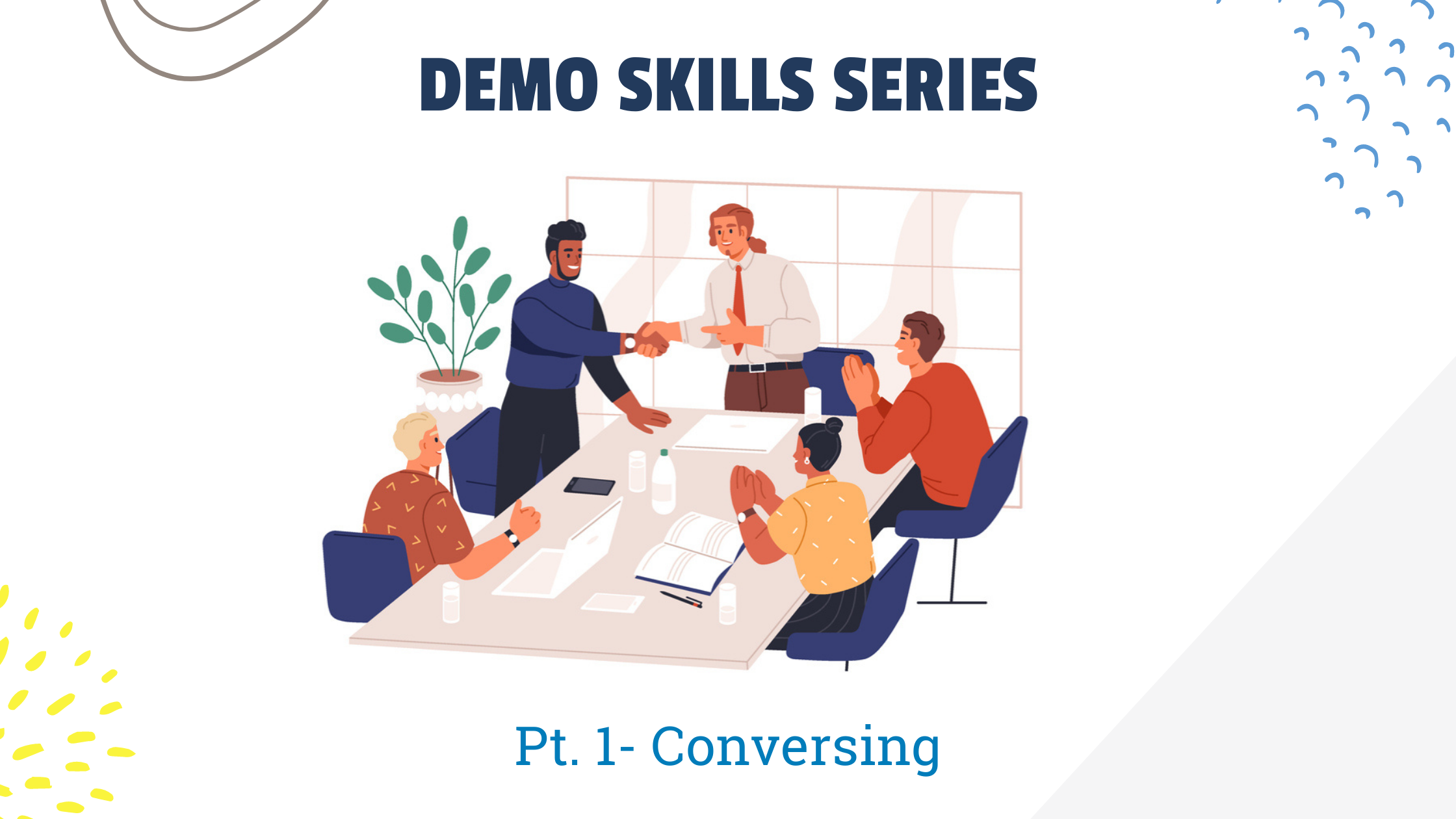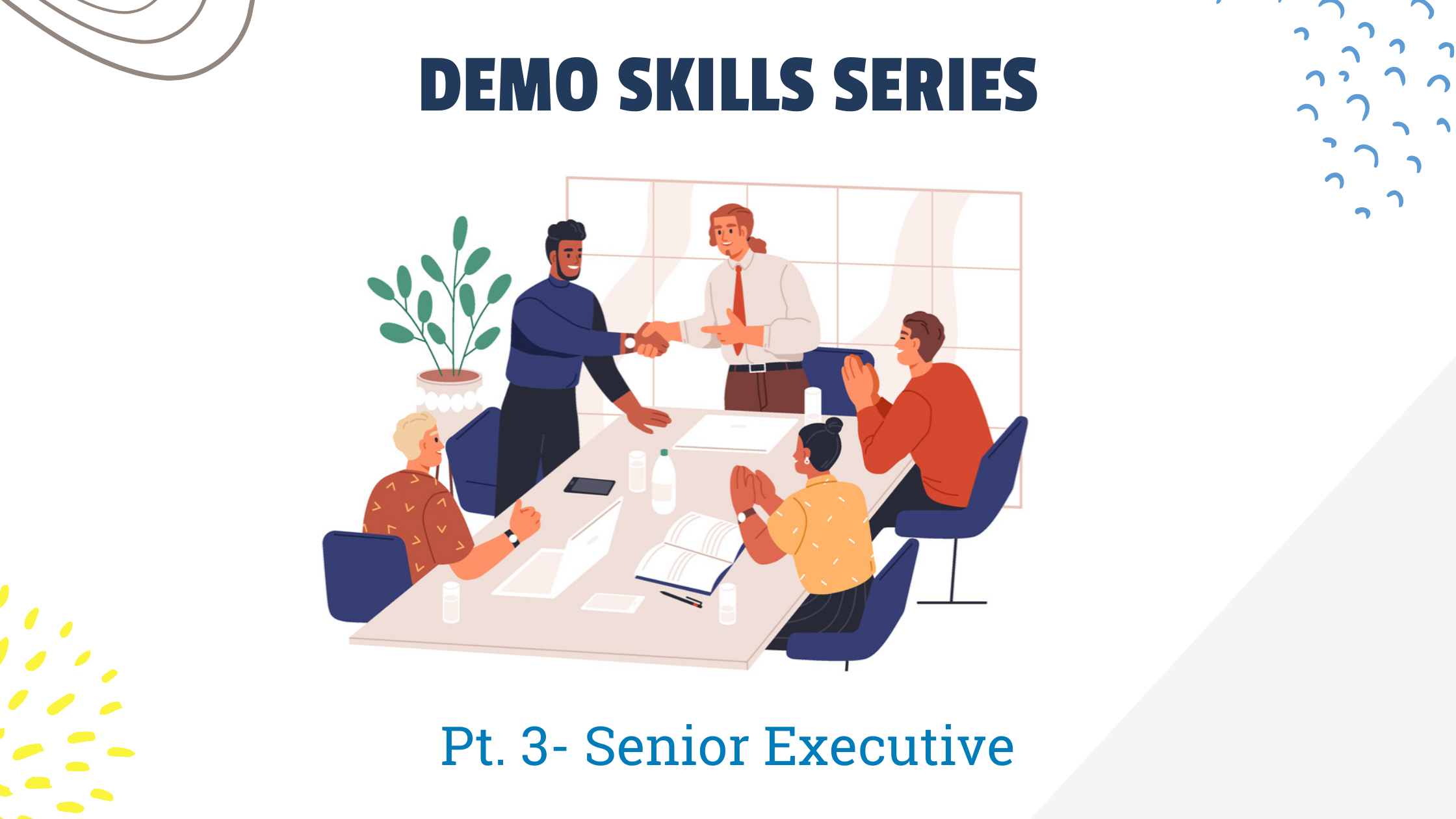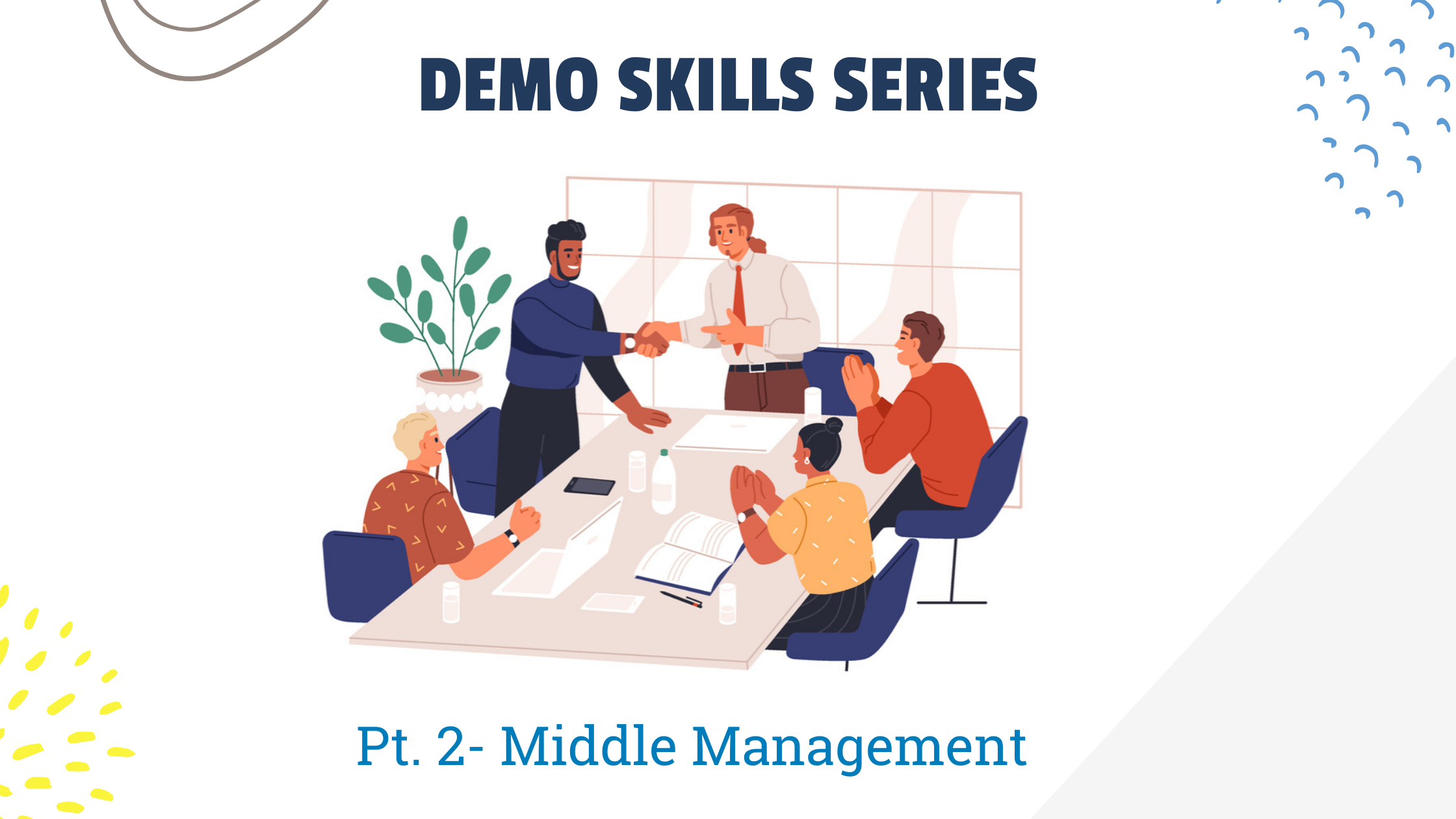2 min read
Demo Skills Series- Conversing With Every Audience Member
Bob Riefstahl Jun 1, 2015 12:00:00 AM

When we think of a demo, we think of a prospect gathering a group of people in a room or on a web conference to see a demo of how our solution will help them. We believe we need to show them how our unique features address the group’s needs and are competitively differentiating. Welcome to the demo. Tens of thousands of demos are performed per day across the globe.
The problem is in the word “group”. Our team has witnessed tens of thousands of software demos across the globe and 95% of them have one thing in common. They are a presentation to a group. Instead, I’d like you to think about a demo as a conversation with individuals. For example, assume there are 7 people in a room. Three of the people are from operations, three are from middle management and one is from executive management. If I perform a segment of the demo that delivers time savings when performing a task, which of the individuals in the room receive my benefit statement?
Notice that I said “individuals”. The first shift I want you to make is to begin addressing the individuals in the room. When you establish the context of this segment of the demo you should look directly at the individuals that perform this job function when you state and/or illustrate the context. When you deliver the benefit statements at the end of this demo segment, you should look directly at the individuals that gain the most from this improvement and conversationally deliver the benefit.
Back to my example above, if you guessed the three individuals were from operations you were correct. Because the primary advantage of this demo segment helps improve their job, look at each person that benefits and conversationally deliver the benefits. If you are on a web demo, call them out by name as you present the benefit statements. “Jim, Athena, and Andrew, as you can see this will really help save time as you…”
“But wait!” you say, “what about the middle managers and senior executive? Don’t we need to include them in these benefit statements?” When it comes to demos, relevance is everything. Time savings for a task isn’t directly relevant to a senior executive or middle manager. If I demonstrate multiple elements of the demo that each save time I’ve created a case for overall departmental improvement in productivity and/or reduction of risk. Middle managers love to hear those benefit statements. However, it simply isn’t relevant or conversational to look at the middle managers after delivering operational benefits to their team members and say “and this is another example of how you can improve productivity." It isn’t conversational therefore it isn’t relevant.
Similarly, the senior executive in the room is bored with operational improvements. What they want to know is how are you supporting their strategic initiatives and financial metrics. An operational benefit eventually addresses their needs but, it would be ineffective to try and make that linkage after every operational benefit.
Back to being conversational versus a presenter; if you believe it is beneficial for people to connect with you, respect your expertise, and trust your message, talk to them! They are individuals and addressing them individually is paramount in your ability to be successful. Don’t create an invisible plane of contention between you and the individuals in the room by speaking to them as if they are one single organism. Lead them through your uniqueness by connecting with them on a more interpersonal level and you’ll see an immediate increase in your effectiveness.
In the next two series of this article, I will discuss how you can improve your connectivity with middle management and executives.

Leverage Video Before, During, & After Your Next Software Demo!
If you’re in Sales or PreSales in a technology company, you know all about the importance of securing the “technical win.” Accomplishing this step...


.png?width=604&name=DEMO%20SKILLS%20SERIES%20(1).png)

